Galleries
47 Canal at 13: As the Tastemaking New York Gallery Grows Up, a Founder Exits
The trailblazing enterprise is opening its new SoHo location today, without Margaret Lee.
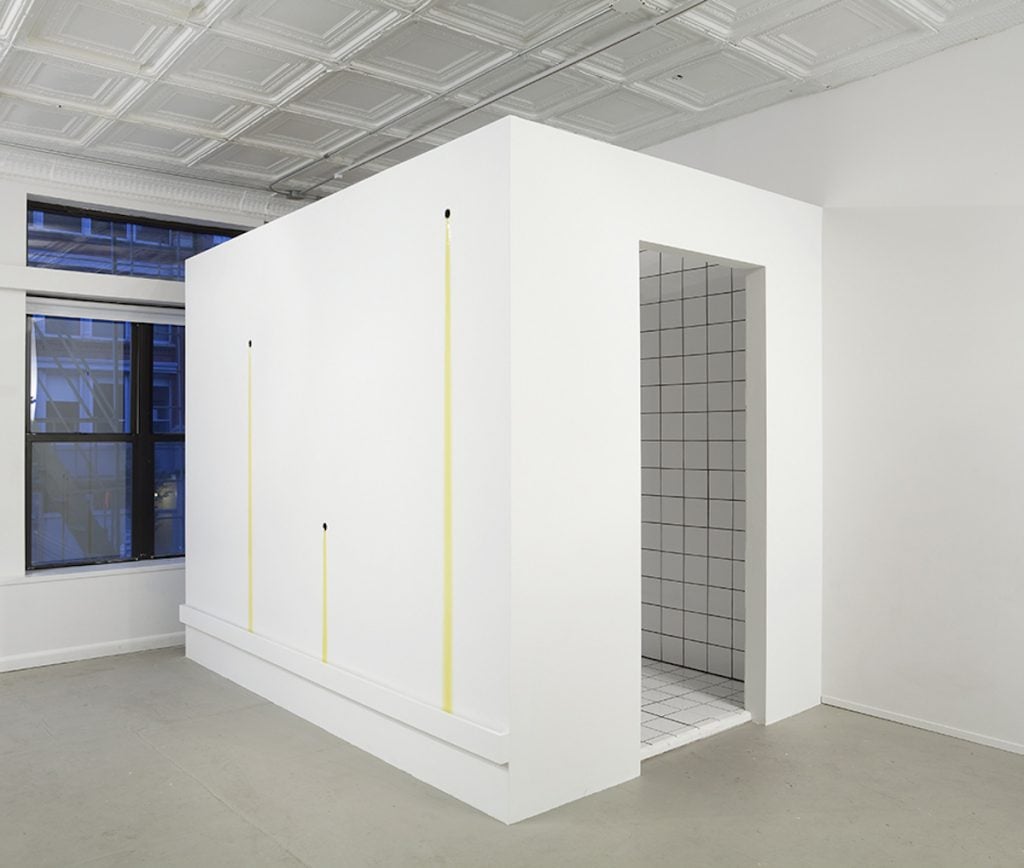
The trailblazing enterprise is opening its new SoHo location today, without Margaret Lee.

Andrew Russeth

“Artists tend to show up in gangs,” the critic Peter Schjeldahl once pointed out. “You come to the city with your friends, meet other friends, hang out in bars, become a group.” Competition and cooperation ensue, and ideally, someone at some point starts a gallery to help sustain the scene. It will probably fail—most of them do—but if things work out just so, history just might get made.
Take the case of 47 Canal. Opened in 2011 by art dealer Oliver Newton and artist Margaret Lee on the second floor of that address in Manhattan’s Chinatown, it quickly presented the first New York solo shows of a group of artists who would become stars. Anicka Yi built an installation with olive oil leaking from a white wall. Josh Kline filled French press coffee pots with sickly mixtures like Coke Zero and ibuprofen. Antoine Catala conjured a beguiling hologram of a cat. Artists swung for the fences in that compact, 1,400-square-foot space, addressing heady, precarious, and bewildering times with freethinking élan. Anything seemed possible there.
“They were not so interested in mining the past but instead explored new material possibilities and shifting social realities that were beginning to be shaped by technology,” the curator Christopher Y. Lew, founder of C/O: Curatorial Office, told me of the artists that came together at 47. “I think it’s also important to note the number of artists of color they worked with from the outset, particularly of Asian descent.”

Installation view of Josh Kline’s 2016 exhibition at 47 Canal, “Unemployment.” Image courtesy of the artist and 47 Canal, New York. Photo by Joerg Lohse.
Last month, Kline opened an exhibition at the Museum of Contemporary Art in Los Angeles, after an acclaimed survey last year at the Whitney Museum curated by Lew. In September, Yi will stage a show at the prestigious Leeum museum in Seoul, following a 2021 triumph in Tate Modern’s Turbine Hall that involved robot balloon creatures. Catala’s bizarro kinetic objects hung at the entrance of the central pavilion of the Venice Biennale in 2019.
Even now, Newton and Lee seem slightly surprised by their success. They had started with just a one-year lease and a name that would be comically impractical if they ever decided to move. “I never thought we were going to exist past that point,” Lee explained one recent morning. In 2013, they did depart, for a far larger space at 291 Grand Street (again on the second floor), but they kept the name, and the business kept growing.
Lee, who is 44, was sitting in a back room of 47 Canal’s newest location, a 6,500-square-foot space on the second floor of 59 Wooster Street, an 1890 building in SoHo with 12-and-a-half-foot ceilings. She’s charismatic, self-deprecating, and sprightly. “I am, like, feral in a way,” she said of her approach to the art field. “I’m one of the Lost Boys, right? Peter Pan and the Lost Boys. We’re just in our thing, and la-la-la, and all of a sudden, the adults are around.”
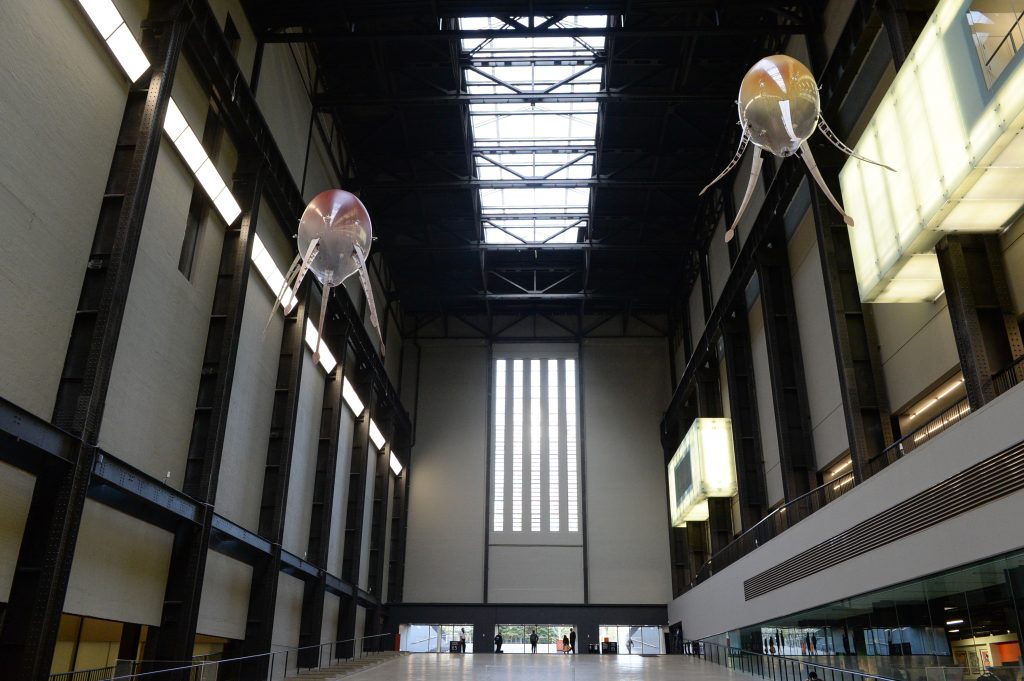
Anicka Yi’s 2021 exhibition at Tate Modern in London. Photo by Nicky J. Sims/Getty Images.
Newton, also 44, was there, too, warm but reserved in a Knicks hat and gray shirt, as was Jamie Kenyon, 39, a partner in the gallery that the couple hired away from Gavin Brown’s Enterprise in 2015. The three were discussing the transitional moment they now find themselves experiencing. When 47 hosts its first opening reception in SoHo tonight, for a group show with 10 Indigenous artists curated by the artist G. Peter Jemison (Seneca, Heron Clan), Lee will be there as a member of the audience. She has retired.
“During Covid, it became very clear: I really just want to be an artist,” Lee said. “That’s what I’ve always wanted to be.” She had stopped going to art fairs years ago, and had gradually pulled back from the gallery, but now she has made it official. “I just felt very confident in everything that was built,” she said. When the move to SoHo was set, she said that she realized, “This is one of these once-in-a-lifetime moments. This is the opportunity for me. It’s all here. This is a gift.”
The migration to SoHo really is one of those only-in-New York situations, and proof that, as sprawling and absurd as the art world has become, it can still be a small, collegial place. 47’s new home was previously the Alexander and Bonin gallery (A&B), where Newton worked from 2005 to 2010, and before that, the Brooke Alexander gallery. (Before that, it was the Kitchen, where the Talking Heads played one of their first shows, in 1976.) Carolyn Alexander, one of A&B’s founders, is leasing the gallery to 47 while keeping the corner office for herself.
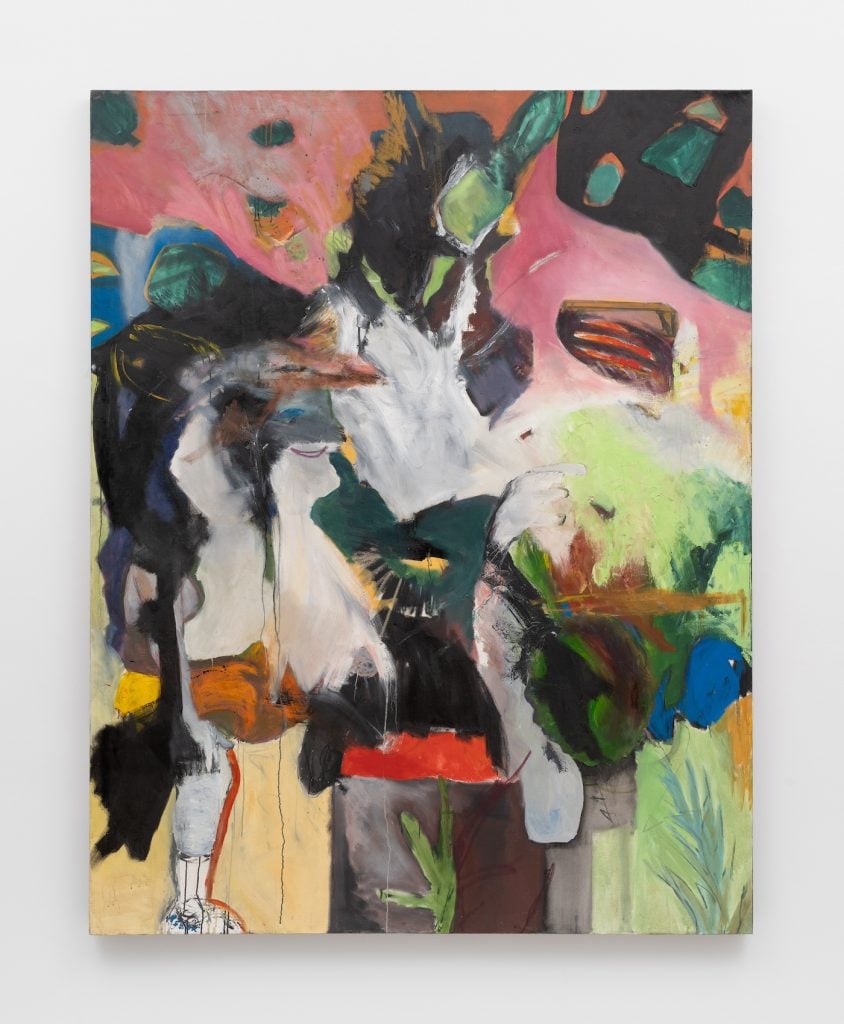
Jay Carrier’s Gathering of the Nations pow wow fancy dancer (1994), on view in “Summer with Friends and Family,” now on view at 47 Canal. Image courtesy of the artist and 47 Canal. Photo by Joerg Lohse.
Lee’s departure is intriguing because, despite her ambivalence about the art business, she is the one who set the whole enterprise in motion. In 2009, while working as Cindy Sherman’s artist assistant, she was running a scrappy project space called 179 Canal in a free space that a landlord gave her at that address. In rapid succession there were shows and events with young guns like Kline, Yi, Kerstin Brätsch, Jared Madere, Boško Blagojević, Stewart Uoo, and many more.
“You know, it’s not like I want to be an art dealer,” Lee recalled thinking as 179’s yearlong run neared its end, “and it’s not that I want to keep running a space. However, isn’t it such a shame to stop now?” Artists were experimenting feverishly at 179, and they were finding a constituency. She could feel momentum building, and she wanted to start a gallery with 10 artists on its roster. She also knew just the person to do it with her. “Margaret asked me to start the gallery with her because she thought I knew how to run a gallery,” Newton said. They both laughed.
The two had known each other for all of three months. Newton would come by 179 with A&B’s preparator, Nolan Simon, a canny painter who would be among 47 Canal’s 10 initial artists. “It was one of those places at the time whose shows I didn’t feel like I could miss,” Simon said.
“If it doesn’t work out, then you can always get another job, based on this experience,” Lee told Newton. Plus, “just working with artists directly, you can’t help but have your brain expanded. That’s the thing I always loved,” she said. Newton said no, then acquiesced. A&B’s partners were supportive but a bit incredulous. “Who’s going to sell the art?” he remembers one asking him.

Installation view of Josh Kline’s 2016 exhibition at 47 Canal, “Unemployment.”
Image courtesy of the artist and 47 Canal, New York. Photo by Joerg Lohse.
Lee also helped spot Kenyon’s potential. She met him at Art Basel in 2013, when he was operating Jonathan Horowitz’s Free Store—a kind of free swap meet—for Gavin Brown in a tent that blew over at one point. Kenyon apparently responded with equanimity. “I was like, Wow, this guy,” Lee said. “Not everyone would have an attitude like that.”
This guy had been to 47 when he visited the city a couple years earlier from Glasgow, having been tipped off by Matthew Higgs, the director of the New York alternative space White Columns. “I never will ever forget it,” Kenyon said. “He was like, You have to go to 47 Canal. It’s ‘New Art.’ I was like, What the fuck is that? Like, what is ‘New Art?’”
Its art was bracingly new, but its approach has been fundamentally old school, in line with the ethos of its principals’ early supporters—A&B, Brown, and Metro Pictures, where Sherman showed. All those (now-closed) galleries focused on a core group of artists while largely ignoring market trends. They resisted the pressure to open branches in a dozen cities and resort towns and to amass a roster big enough to please the taste of any billionaire.
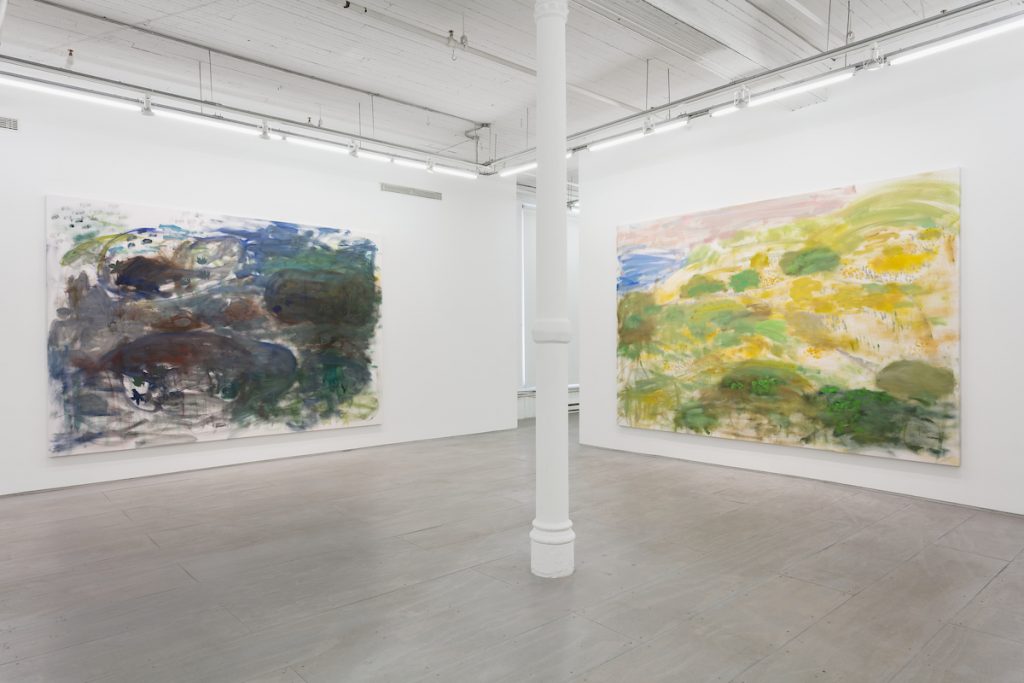
An installation view of Trevor Shimizu’s 2020 exhibition at 47 Canal, “Landscapes.” Image courtesy of the artist and 47 Canal, New York. Photo by Joerg Lohse.
47 has maintained a single address, has no Instagram account, no PR agency on retainer, and has added talent gradually, from 10 to just over two dozen today. There’s the ace painter Janiva Ellis, whose thorny paintings about race in the United States are heirs to Robert Colescott’s. There’s Emmanuel Louisnord Desir, who carves rhapsodically evocative figurative sculptures from wood. And there’s Cici Wu, whose homespun installations traffic in enigmatic narratives.
Wu, who grew up in Hong Kong, came aboard while running an artist-run venue nearby with friend, called Practice. (A notable percentage of 47 artists have spaces or curated.) “Underneath the surface of a commercial gallery, it has also been a site that has interwoven a special living network, which brought warmth, inspiration, and support to me in New York,” Wu said.
A lot of people mention that kind of support when they talk about 47. When Simon was mulling a major shift in his practice around 2011, he said, Lee and Newton “encouraged me to commit either way—not to hedge or half-ass a decision.”
Now Lee is joining the ranks of the artists that she has long counseled and championed. (She’s represented in New York by Jack Hanley Gallery, where earlier this year she showed playful and slippery abstract paintings.) She recently removed her keys for the old 47 location from her keychain. “I almost cried,” Lee said. “It was just a lightness. I just knew it’s the right decision.” As she signed off, “I looked at the staff,” she told me, “and I said: Bring it!”
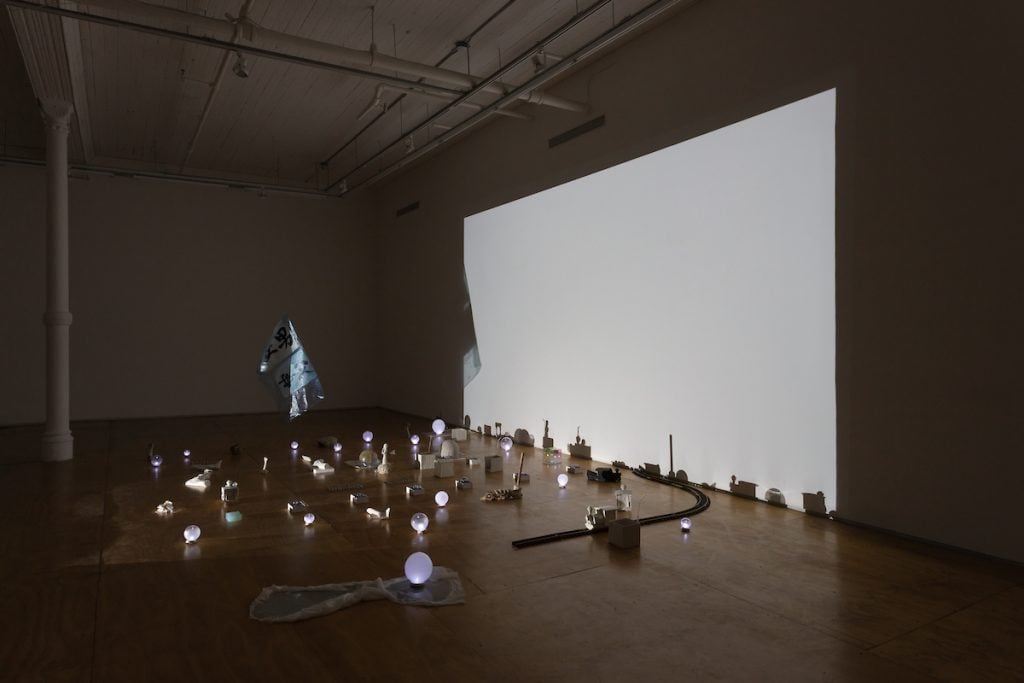
Installation view of Cici Wu’s 2018 exhibition at 47 Canal, “Upon Leaving the White Dust.” Image courtesy of the artist and 47 Canal, New York. Photo by Joerg Lohse.
47 is taking on its formidable new space at a precarious time for the art market, as a wave of galleries—including many of its founders’ contemporaries—go out of business. “We feel so much gratitude, and so much excitement and optimism about how things can go, and it’s an incredibly tough time for the art world,” Newton said. “It’s a very hard for us, and it’s very hard for everybody right now. When things are hard, you try to remind yourself why you do something.”
“We have a lot of hard work to do, too,” Kenyon said as our meeting wrapped up. “We have always taken this approach of: This is hard work and you work hard doing it, and from that hard work, we’re going to be able to do really exciting things—and hopefully continue to do so. There’s no guarantees.”
“There’s no guarantees,” Lee said.